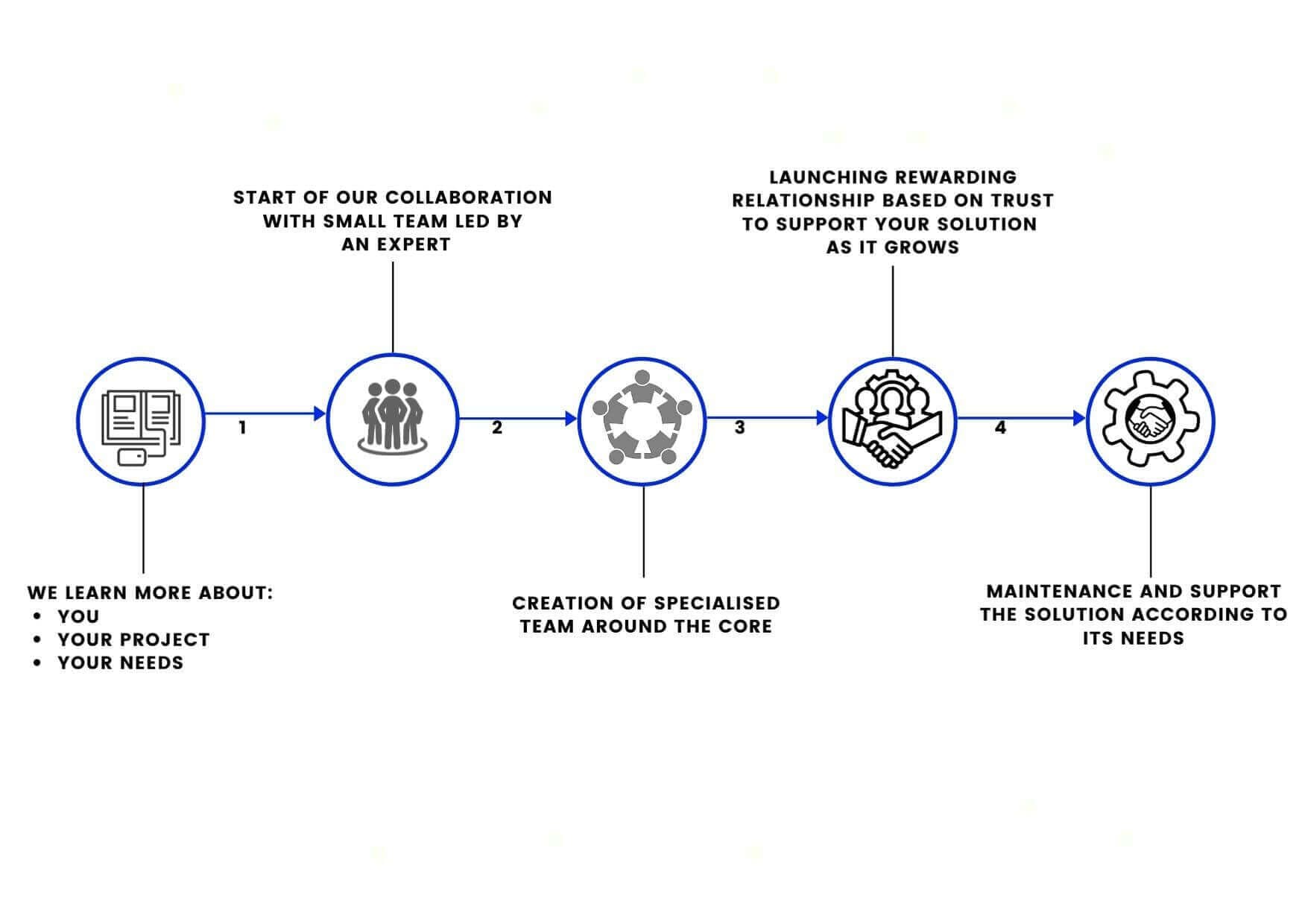Introduction
The ever-evolving nature of software development can often make setting a fixed price for work impossible. Much like the IT products being developed, pricing models need to offer a high level of flexibility for if and when requirements change. This is the main reason time and materials contracts have risen in popularity in recent years. Often referred to as T&M, a time and materials contract model works out the overall cost of a project based on the time spent on the work carried out, plus any materials used.
But how does that translate in the world of IT outsourcing? In this article, we take a close look at exactly how a time and materials contract works, plus what types of projects it is best suited to.
Time & Materials contract: How does it work?
A time and materials contract is based on the number of hours a developer spends on a project (according to a pre-arranged hourly rate), plus any materials (eg software licenses) used for the duration of said work.
The key to a time and materials contract is flexibility – it can evolve alongside a project, and easily be adjusted as and when requirements change. The level of control this type of agreement offers to both clients and vendors is what makes it such an appealing option.
A highly agile-orientated workflow, time and materials contracts can be hugely beneficial, ensuring cost-efficiency, transparency, and timely delivery of the task in hand. However, this type of agreement requires a level of trust from both parties in order for it to work successfully. Vendors must be transparent when it comes to time spent on a project and regularly update clients with costs incurred, and clients must always be present to discuss requirements and approve decisions, as well as pay the agreed rate. Needless to say, picking the right technology partner for this type of agreement is vital.
Our process
In practise, a T&M contract will include milestones of product delivery, all of which are defined and agreed by both parties. Here’s how a time and materials model works at Solidstudio:
- The size of the project is initially assessed, before being broken down into small deliverables, each of which will be estimated and carried out subject to a client’s approval.
- Developers, UX designer and Project Managers at Solidstudio work at fixed hourly rates of between $40-75, based on their level of expertise, skills and qualifications. Staff best suited are assigned to a project, with the hourly rate communicated to the client before any work is undertaken. Each month, a worklog and invoice according to the specific developer’s hourly rate is sent to the client.
- Solidstudio works in agile iterations of two weeks, presenting progress to clients at the end of each iteration. In addition to this, the Solidstudio team also hosts recurring planning sessions with clients to track and measure performance.
Time & Materials contract: When should it be used?
While it might seem like a time and materials contract is the perfect pricing model, it’s not always the best solution. As a general rule, time and materials contracts are most suited to projects, where the scope of the project is initially hard to define or can be subjected to a change. T&M is perfect for when there is no clearly finalized product, and when there is no easy way to divide the project into smaller parts. This contract type lends itself in particular to:
- Projects with undetermined or vague specifications
- Start-up businesses, with no exact, predefined goal
- Projects that need to quickly react to market trends
- Outsourcing a development team to work side by side with the internal IT department
Whatever software development you might require, it’s always best to check all pricing options available. For more information on time and materials contracts and how they work, contact the Solidstudio team.


